Daily, Monthly And Weekly Tests Of GMDSS Equipment On Board Ships
The development of GMDSS (Global Maritime Distress And Safety System) for the shipping industry has come a long way. The GMDSS system was established with an objective to improve distress and safety radio communications and procedures at sea.
The greatest benefit of the GMDSS equipment is that it vastly reduces the chances of ships disappearing without a trace, and enables search and rescue (SAR) operations to be launched without delay and directed to the exact site of a maritime disaster.
Gone are the days when ships were required to have dedicated radio officers to operate radio equipment. With the implementation of GMDSS, every deck officer with a General Operator Certificate (GOC) and the license is entitled to use the GMDSS equipment and make radio communications when needed.
For the GMDSS equipment to function properly and effectively in the event of an emergency, it is critical that mariners understand its purpose and do the required maintenance on board the vessel to keep it in a working condition and make the best use of GMDSS equipment.
The daily, weekly and monthly tests of all the GMDSS equipment should be done by every navigating officer responsible for it without any compromise. We must not forget that it is our only best friend in a distress situation at sea.
Ships at sea must be capable of performing the nine functional GMDSS requirements. They are:
- Ship-to-shore distress alerting
- Shore-to-ship distress alerting
- Ship-to-ship distress alerting
- SAR coordination
- On-scene communications
- Transmission and receipt of emergency locating signals
- Transmission and receipt of MSI
- General radio communications
- Bridge-to-bridge communications
This can be ensured by testing the GMDSS equipment at regular intervals.
The GMDSS equipment and systems include the VHF DSC/RT, MF/HF DSC/RT, INMARSAT, SART, EPIRB, NAVTEX, and SURVIVAL CRAFT TWO WAY VHF.
Daily Tests On GMDSS Equipment
The proper functioning of the Digital Selective Calling (DSC) facilities shall be tested at least once each day, without radiation of signals, by the use of the equipment’s Internal test facility. The daily test checks the internal connection, transmitting output power and the display. The process can differ from equipment to equipment based on the make.
The daily test of the FURUNO model of the VHF equipment can be executed as below:
1. At the standby display press, the SHIFT key followed by the TEST key. The “TEST IN PROGRESS” pop up window appears momentarily and distress alarm both visual and audible occurs.
The display shows the TEST screen. If everything is okay with the set and is functioning properly, the results show OK as below. However, in some situation or if it’s a faulty equipment, ‘NG’ may be displayed. In this case the daily test should be repeated a couple of times. If the problem persists, it should be immediately brought to the notice of a shore based service engineer.
2. Press the CANCEL key to stop the alarm. To stop the daily test, press the CANCEL key again.
Daily test also needs to be performed on the MF/HF equipment to ensure it will function properly in the event of distress.
1. Press the [3/TEST] key to start the test. Select the Daily Test by rotating the knob and push to enter. After several seconds the display shows the test results; OK for normal operation. The audio alarm also sounds after the test results are displayed and the alarm lamp flashes several times.
2. The CANCEL key should be pressed to quit the test and return to the normal screen.
Batteries providing a reserve source of energy should also be checked daily. Mainly the battery ON-LOAD and OFF-LOAD voltages are checked by a voltmeter connected to the charger.
OFF-LOAD: when no equipment is connected, the battery should read 24 V or slightly more.
ON LOAD: switch off the AC power and note the voltage of the battery. Press the PTT on MF/HF transceiver on a non-distress and idle R/T frequency. Voltage will fall depending upon the load. If the voltage falls more than 10% it indicates that the battery is either weak or not charged fully. In this case, batteries should be recharged.
It is also important to check that all printers are in a working condition and there is sufficient supply of paper.
Weekly Tests On GMDSS Equipment
It is necessary to test the proper operation of the DSC facilities at least once a week by means of a test call over one of the six distress and safety frequencies, when within the communication range of a coast station fitted with a DSC equipment. A test call to the coast station can be sent in the following ways:
MF/HF DSC:
1. Press the [2/DSC] key at the DSC standby screen and then push the [ENTER] knob to open the CALL TYPE menu.
2. Rotate the [ENTER] knob to choose TEST CALL and then push the [ENTER] knob. Push the [ENTER] knob again to open the COAST ID menu.
3. Using the numeric keys, key in the ID of the coast station ID (seven digits) where you want to send the call depending upon the area you are navigating in and then push the [ENTER] knob. The coast station ID can be found from the Admiralty List of Radio Signals Volume 1- Maritime Radio Stations.
4. Now push the [ENTER] knob to open the DSC FREQ menu. (Note that here the PRIORITY is automatically selected to SAFETY.)
5. Rotate the [ENTER] knob to choose an appropriate frequency and then push the [ENTER] knob.
6. Now press the [CALL] key to send the TEST call to the respective shore station.
After the test call has been sent successfully the acknowledgement is received from the shore station. The audio alarm sounds on receiving the acknowledgement.
Many times it often happens that the deck officer does not receive any acknowledgement from the shore station. In such cases, we often take it for granted that the shore station is not sending the acknowledgement. However, in reality, this might not be the case.
The problem could be with our equipment too. To make sure that the MF/HF equipment is in order, it is better we try sending the test call using other frequencies and to other stations. Even if then we fail to receive any acknowledgement, a test call can be sent to a passing ship if possible. Instead of keying the coast ID, key in the MMSI of the passing ship. It is better to call the ship and confirm if they have received the test call. We can also request them to send us a test call to ensure that the equipment receiving facility is functioning properly.
It is also recommended that a station to station test takes place using VHF DSC.
1. Press the CALL key. This will open the compose message screen where the call type can be selected. Rotate the channel knob to select TEST call.
2. Enter the Station ID, in this case, the MMSI of your own ship and then press the CALL key for it to be transmitted.
The audio and visual alarm is generated and the test call is received on the other VHF station. Press cancel to terminate the test call.
Monthly Tests On GMDSS Equipment
EPIRB:
The Emergency Position Indicating Radio Beacon or EPIRB should be examined by carrying out a self-test function without using the satellite system. No emergency signal is transmitted during the self-test. During self-test the battery voltage, output power and frequency are checked. The EPIRB should also be checked for any physical damage. The expiry date of the battery unit and that of the hydrostatic release unit should be checked. Also, check that the safety clip is properly attached and in place.
To perform the self-test on the JOTRON EPIRB:
- The EPIRB should be removed from the bracket first.
- The spring loaded switch on top of the EPIRB is then lifted to the TEST position.
A successful test will consist of a series of blinks on the LED test-indicator, followed by a continuous light and a strobe flash after approximately 15 seconds. The last green led indicates a successful test.
- After the successful completion of the test, the switch is released and the EPIRB is put back into the bracket.
SART:
The Search and Rescue Transponder or SART is also equipped with a self-test mechanism to test the operational function of the beacon. The SART is tested using the ship’s X band radar. The test should preferably be done in open seas to avoid interference on the radar display.
- Remove the SART from the mounting bracket.
- The SART should be held by one person in view of the radar scanner. This could be done from the bridge wings. The SART should then be put on the TEST mode by rotating it to the left to the TESTPREVUE position for a brief period.
Visual lights operate and bleeps are heard indicating that the SART has been triggered.
- Simultaneously a person should observe the radar display for the correct pattern. At least 11 concentric circles appear on the radar display if kept on a 12 M range scale. The distance between the two rings is approximately 0.64 NM.
- The SART should also be visually inspected for any signs of physical damage. The battery expiry date should also be noted. The safety clip should be in place.
Survival Craft Two Way Portable VHF Equipment
Each survival craft two way VHF equipment should be tested at least once a month to ensure proper operation in case of a distress situation. It should be tested on a frequency other than VHF channel 16 (156.8 MHz). The expiry date of the battery needs to be checked and changed when required.
1. Press the power key to switch on or off.
2. To select a different channel, press the CH key and use the arrow keys to select the required channel. The selected channel is indicated with channel number and frequency on the screen.
3. Press the PTT (Push to talk) to communicate with another radio-telephone to test receive and transmit functions. One person can stand near the VHF receiver to receive a test call from the handheld radio.
The symbol ‘TX’ is shown when the PTT is pressed and transmission takes place. The TX indicator indicates that a carrier is produced at the antenna output.
When it receives a signal the symbol ‘RX’ is indicated on the display.
NAVTEX :
The Navtex is an equally important GMDSS equipment and is the source of maritime safety information. It is also equipped with a test function that can test the battery, keyboard, LCD, ROM and RAM. It is a good practice to test the Navtex and detect an error if any. The Furuno model of Navtex can be tested as follows:
1. Press the MENU/ESC key to open the main menu.
2. Now use the navigating arrows to choose SERVICE and then hit ENT. The SERVICE submenu contains the TEST option. Use the down arrow key to select TEST and press ENT key. Choose YES and press the ENT key again. The TEST will start and the results will be displayed on the screen after a few seconds.
If the test is successful the results show OK otherwise it will show NG meaning – No Good.
It also tests each key for proper functioning.
The Rx test screen shows as follows:
The test results can be printed and filed in the GMDSS log book.
INMARSAT:
The INMARSAT is also equipped with a diagnostic test which checks it for proper operation. The steps to perform a Diagnostic Test on FURUNO INMARSAT are given below;
- On the keyboard press the F7 key to display the ‘OPTIONS’ menu.
- Use the down arrow to open the TEST menu and then select the DIAGNOSTIC TEST. Select YES to begin the test.
On completion of the test, the results are shown on the screen as below. The ESC key is used to return to the main menu.
A PV test or Performance Verification test can be performed every month. This test consists of receiving a test message from an LES (Local Earth Station), transmitting a message to an LES and a distress alert test. The PV TEST can be opened from the TEST menu under OPTIONS as mentioned above.
The status shows ‘TESTING’ when the test is in process.
The status changes to IDLE on completion of the PV Test.
The test results can be seen from the option ‘PV Test Result’ under the TEST menu. The test results can be printed and logged. BBER denotes the bulletin board error rate. Pass appears for no error. “PASS” appears for satisfactory completion of the test.
GMDSS Battery:
The battery connections and compartment should also be checked. The level of the electrolyte and the specific gravity of each cell should be checked and recorded. Sulfation can reduce the specific gravity thereby reducing the battery capacity. Maintenance free batteries on board, however, do not require any such checks.
It is recommended every month to visually check all antennas for the security of mounting and visible damage to the cables. The antennas are located on the monkey island. Any deposit of dirt and salt should be removed. It is also important to check the condition of the aerials and insulators along with the help of an electrical officer. Ensure that the equipment is switched off and isolated before carrying out any work on the antenna.
GMDSS enables a ship in distress to send an alert using various radio systems. It is therefore important that all the GMDSS equipment are maintained in a state of readiness and working condition. To achieve this it is mandatory to perform the daily, weekly and monthly tests. Only then can we ensure the safety of the ship and its crew.
Disclaimer: The authors’ views expressed in this article do not necessarily reflect the views of Marine Insight. Data and charts, if used, in the article have been sourced from available information and have not been authenticated by any statutory authority. The author and Marine Insight do not claim it to be accurate nor accept any responsibility for the same. The views constitute only the opinions and do not constitute any guidelines or recommendation on any course of action to be followed by the reader.
The article or images cannot be reproduced, copied, shared or used in any form without the permission of the author and Marine Insight.
Do you have info to share with us ? Suggest a correction
Latest Marine Navigation Articles You Would Like:
Subscribe To Our Newsletters
By subscribing, you agree to our Privacy Policy and may receive occasional deal communications; you can unsubscribe anytime.
Web Stories

About Author
Paromita has completed graduation in Nautical Science and is presently preparing for 2nd mate exams. Besides sailing, she loves to read books and travel. She has also won many awards in music.






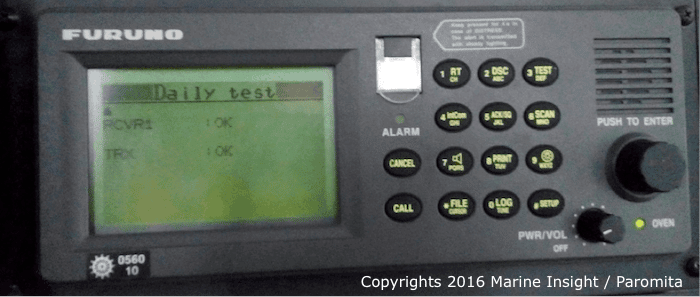
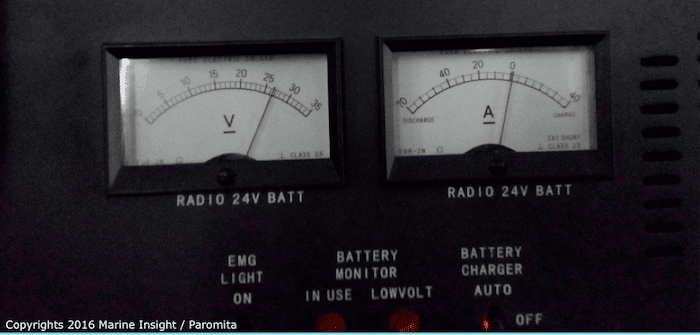

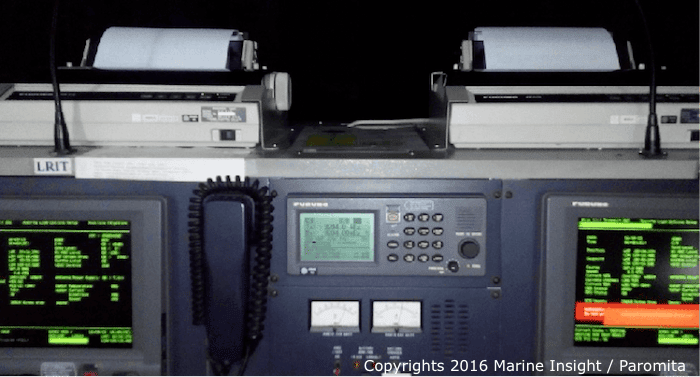




















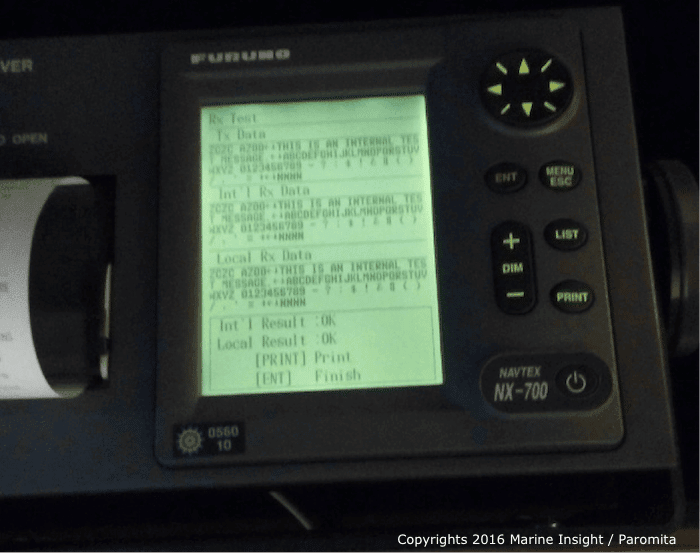

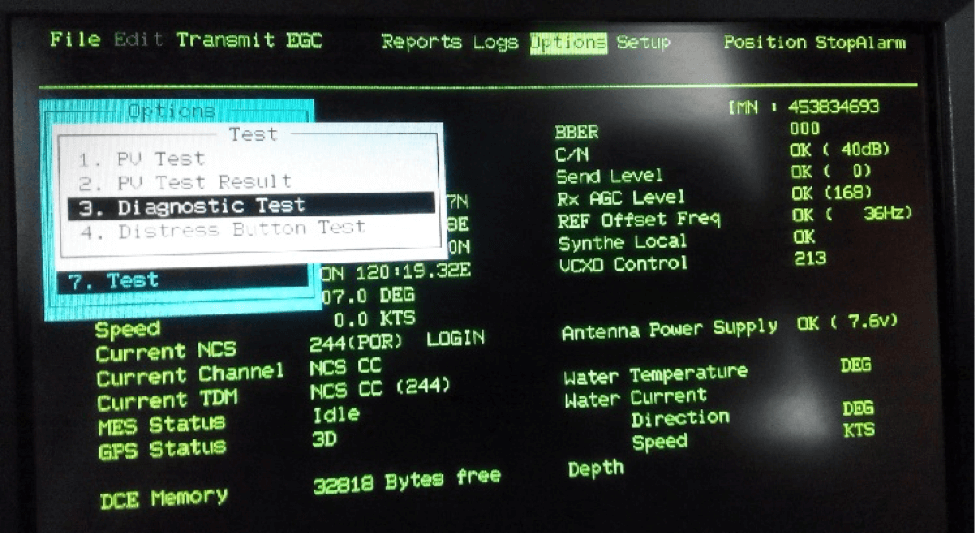


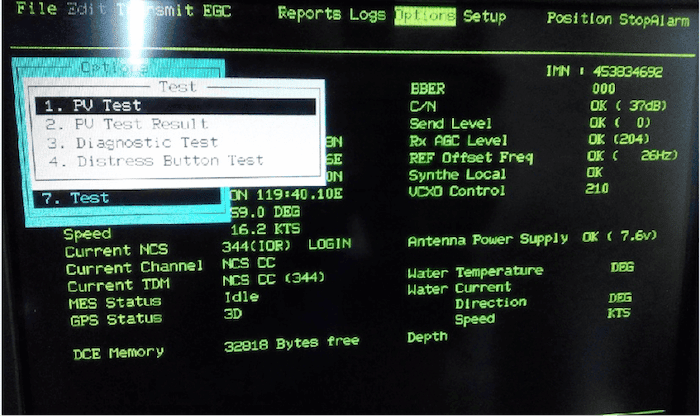



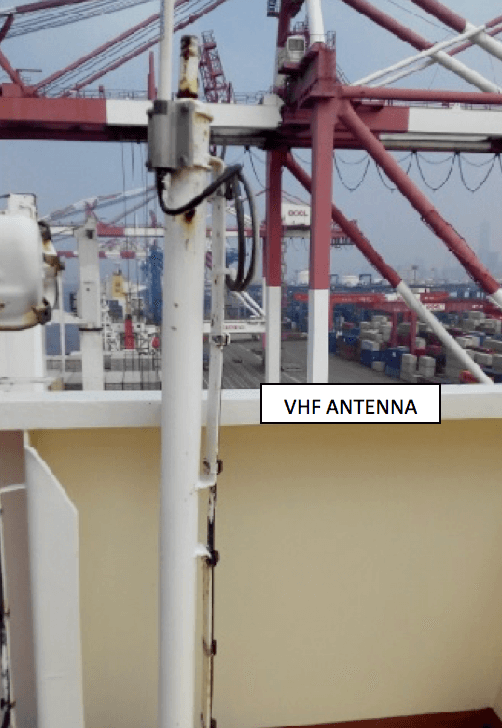


















The EPIRB test should be performed in the first 5 minutes of an hour.
Their is also an AIS test.
Nice article!
my favorites list for bridge electronics
Radar: Fruno
Gmdss: Sailor
Ais:Fruno
very educational, i love it and it improved my knowledge of the almighty GMDSS. Thanks.
very educative, easy to learn, i love it and thank you.
Your blog gives us the very good knowledge about the different type of test which should be carried out on GMDSS equipment. These tests are necessary as GMDSS should always be in the perfect condition as it is required for radio communications at sea.
Glad it is useful to fellow seafarers.
In which document are written these guidelines about daily/weekly/monthly gmdss tests ?
Where can we get manuals with these good instructions.
The best place to find the manual is on ship 🙂
I want to ask…is my equipment ok if pv test loading so long until 1 day ??
What if the epirb was accenditally activated and a distress was sent? What are the procedures to cancel that distress?
If EPIRB is activated accidentally, the Master should contact the nearest coast station or an appropriate coast earth station or RCC immediately and cancel the distress alert.
It’s not 2.Enter the Station ID, in this case the MMSI of your own ship and then press the CALL key for it to be transmitted.
Don’t do this…..
It will also work when you disconnect all your antennas.
Use always a “Coast Guard” station or another vessel, at least 10 miles away, so you know that there is output power on the antenna.
Very good and interesting
Good day Sir, in the new VIQ revision there is this Monthly test to be done regarding Inmarsat C, EGC function test,what is that and how to do the test. Any experience? Need your help Sir. Thanks in advance.
Thanks for this article. Please could you advise with the links of sourse of this information. Especially regarding requirements to perform on/off test daily and procedure as such. I will be appreciate for your assistance with providing this information.
Also now it is common to have an AIS SART. If normally we check this equipment every month, in the case of the AIS SART things are slightly different. According to the manual we should avoid testing it every month, as it drains the battery. The self test should be done once a year. Cheers!
Very informative…is it necessary to test GMDSS eqpt while at berth or in anchorage?
Helli, i have the same question cuz i cant find unfornation on board.
Is it neccesary ti maje all test while alingside? When we are liading we are not making teat, but are at berth waiting for ahifting to liading bert alredy 5 days. And my mf/hf is earthed. Di i have to make the tests?
Any body can give sample how to write down in gmdss log book for doing any test.Thks before.
Pls suggest when doing PV test from sat c the results are coming with different utc time
Hi,
As per the radio regulation, its said that MF/DSC test call hard copy is not required, if there is a capacity for the DSC modem to store the transmitted and received logs . But can anyone help me the IMO document of this mentioning, the non requirement of the MF/ DSC printer.
Thank you for such precious information. I really needed this for my interview for promotion to third officer.
@Kaung: Glad the information is useful. Best of luck. ????????
Very good! I learned a lot! Muie PSD !
@Regele: ????????
VERY GOOD ARTICLE AND GIVES EXPLANATION OF ALL THE GMDSS TESTS IN DETAIL.
VERY INFORMATIVE
PLEASE CAN YOU GIVE IN DETAILS WHAT ENTRIES ARE ENTERED AS DAILY / WEEKLY / AND MONTHLY TESTS IN GMDSS LOG BOOK. THANKS
Answer for Jim:
During berthing, it is strictly forbidden for ship’s to test gmdss equipment. It is assumed that the gmdss watch is switched off, mf/hf off, ais/vhf 1 & vhf 2 on low power, both radars on stand by, main aerials isolated prior to enter the harbour with this noticed also in gmdss logbook. The only equipment remain on is inmarsat equipment but no any gmdss test are allowed to be done at berth. The reason to swirch off radio/gmdss equipment when alongside is for tankers vessels at terminal to avoid unnecessary radiation/ or sparks which could lead to accidents such as fire, explosion and so on, and for all types of vessels to avoid jam/interference. we can define a port or harbour a place with high density of vessels, each one carrying its own radio installation, which, if in use all in same time and in such a restricted place, will produce congestion in radio system, not in maritime mobile service only, but for aeronautical, army, police, medical, security, government and other communication systems which use same band of communication. before gmdss system come into force in february 1999, ship’s transmitters where sealed by port authorities (radio inspector) from arrival to departure, even in anchorage hf transmitter was forbiiden to be used, only mf communication with adjacent mf coast station were allowed. on the other hand, gmdss system is designed mostly for distress and safety at sea, in port we don’t need to use it. in case of emergency in port we have other option. So, if you need to test gmdss equipment daily, weekly or monthly, you can do it before arrival or with first opportunity after departure, but not in harbour. in harbour you are dealing with loading/discharging operation as deck officer. For routine/commercial communication ship’s captain have enough email system which cover all his need for communication. and don’t forgeth, the ais is not gmdss equipment. it can be tested, but is not compulsory as part of gmdss requirements. it can be tested only as bridge equipment as required by vetting or psc inspection.
More information regarding gmdss testing daily/weekly/monthly you can find in company policy, gmdss equipment manuals and instuctions, gmdss manual, admirality list of radio signals vol 5 (gmdss) and ITU radio regulations. good luck !
It will be nice if you provide more reliable sources instead of your own experience. All equipment should be tested according SOLAS requirements and other documents.
Hi.
I do not receive acknowledgement on MF/HF when I send a test message to a coast station or ship station.
The ship station received my test message and ack it but I did not received the ack.
Afterwards ship station sent me a test message and I received it and ack it and the other ship received my ack.
So what seems to be the problem. Why do I not receive the acknowledgement?
Please do check with the maker as it seems to be the problem of settings.
Thank you for this refreshment. Really nice article.
@Awanish: Thank you for your comment.
Very informative just want make correction in monthly test of INMARSAT satc unit monthly actual line test to be done with LES not performance test that is done in weekly test. Actual test you send message to LES with code 91. LES will send the confirmation and delivered message.
What is your source, you should write it